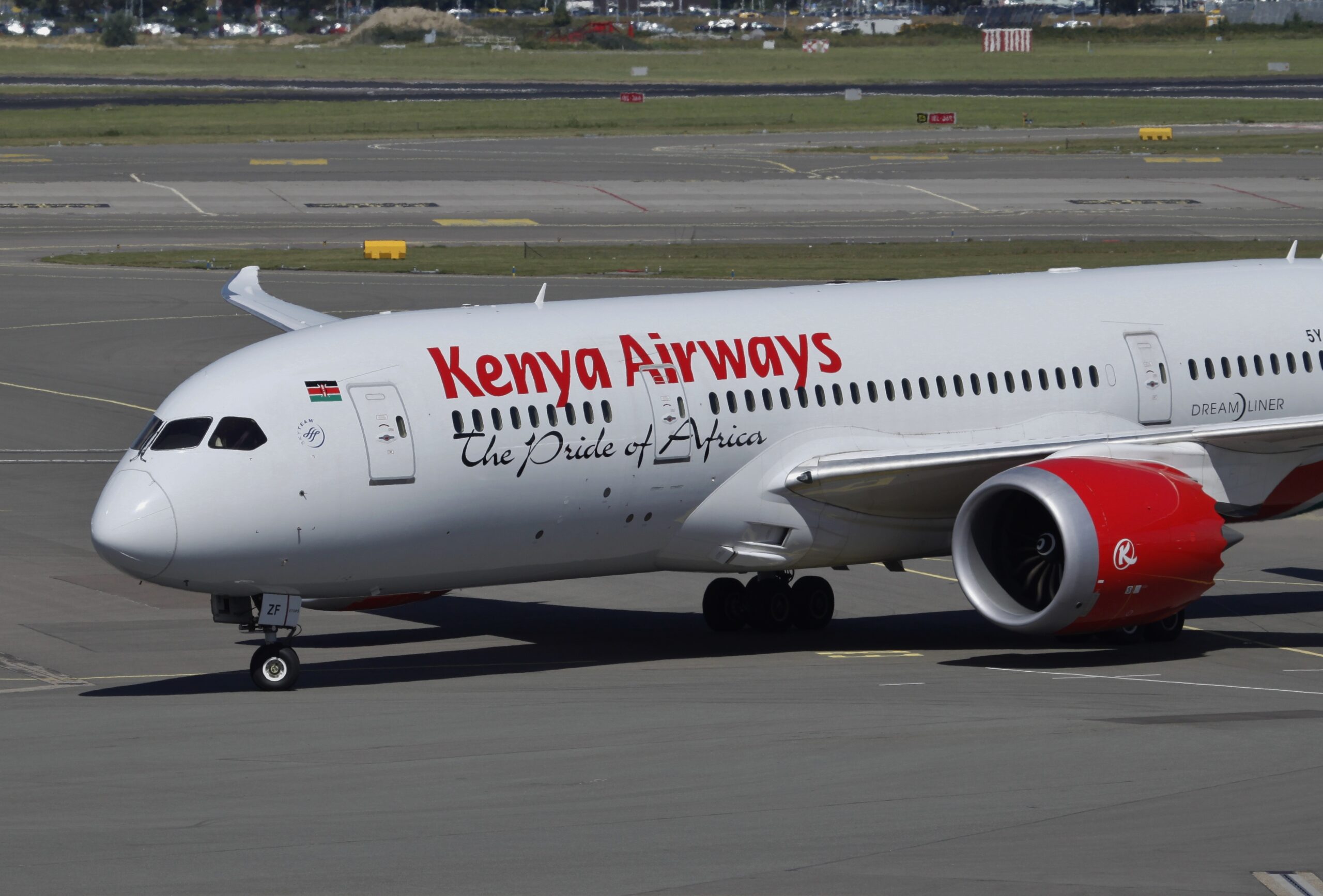
MG 9845 scaled
The Government of Kenya is moving towards the nationalization of one of Africa’s biggest airlines, Kenya Airways. The success of that venture would make the carrier fully owned by the government just like many carriers in the continent like Ethiopian Airlines, Rwandair, and South African Airways among other national airlines.
Kenya Airways is currently a public-private partnership. The largest shareholder is the Government of Kenya (48.9 percent), with 38.1 percent being owned by KQ Lenders Company 2017 Ltd (in turn owned by a consortium of banks), followed by KLM Royal Dutch Airlines with 7.8 percent.
In 1995, International Finance Corporation (IFC) successfully advised the government on the privatization of Kenya Airways. After selling 26 percent of the airline to a strategic partner, the frequency of the airline’s flights grew by 61 percent in six years, developing Nairobi into a regional hub.
The Chief Executive of the airline, Allan Kilavuka who exclusively spoke to AirInsight and who hinted on the nationalization plan, disclosed that the government like all the governments across the world stood by the carrier during the COVID-19 pandemic period which had eased off but still around the globe.
Government’s bail-out funds
Kilavuka stated that the government’s bail-out in the face of the pandemic greatly assisted the airline. “We have received bailouts from the government which have greatly helped us navigate the murky waters of the new normal. Earlier this year, The National Treasury gazetted the exemption of Kenya Airways from paying the minimum tax at a rate of one percent of their turnover; this will be able to save us hundreds of millions of shillings annually. The Government is also facilitating plans to nationalize the national carrier”.
The carrier in February received KES10 billion Kenyan shillings ($1.3 million) in COVID-19 state aid, less than a year after securing a KES5 billion ($45.6 million) loan from the Treasury. The amount was to enable the airline to sustain basic operation during and post-pandemic.
Kenya Airways was already struggling before the COVID-19 outbreak, posting a loss of almost KES13 billion ($118.7 million) in 2019. The national carrier needed money for the maintenance of grounded planes, payment of staff salaries, and settlement of utility bills like security, water, electricity, and parking. The carrier has a history of losses.
Kenya Airways plans to expand its network
The carrier plans to expand its routes to different markets in alignment with its strategy for the sustainable development of Africa as it continues to contribute to the socio-economic development of the region by ensuring the movement of people and goods. These depend on various external factors, including lockdowns and other government restrictions impacting passenger travel. Kilavuka noted that his team would continue to update the public regarding the new routes in the pipeline as soon as they are ready to go into the market.
Kenya Airways is well-interconnected within Africa. It serves over 36 points in the continent and is keen to grow this figure as the pandemic phases out. According to the airline’s CEO, “our interest is to connect Africa as much as we possibly can and provide linkages to destinations outside of Africa.” In 2019, KQ was voted by AFRAA (African Airlines Association), The Best Improved in Intra-Africa Connectivity.
“Our aspiration is to be the preferred carrier in the region by 2024. We are currently ranked second for intra-Africa connectivity. As we build back better, we will renew our focus in the region, with actions ranging from prioritizing return to earlier suspended African destinations, revamping and increasing frequencies to our signature African destinations like Cape-Town, Victoria Falls, Livingstone, Seychelles among others.”
Other plans are reopening key African islands like Mauritius, Madagascar and being first into these markets. Of equal importance is building partnerships with other African carriers like Congo Airways (in DRC), Airlink (in South Africa), partnering with like-minded airlines like Delta Airlines and other companies to offer greater access to niche markets like Maasai Mara.
South Africa and Uganda most popular routes
In Africa, the airline’s most popular passenger routes are Kenya, South Africa, and Uganda. Internationally, it is the United Kingdom. It aims to embark on its operations in some of its other prominent routes based on how the COVID-19 situation evolves.
Some of the new cargo routes that have been activated during the pandemic include Sharjah, Frankfurt, Guinea Bissau, New Delhi, Gaborone which serve both scheduled and non-scheduled basis as well as the activation of the southern HUB concept routes Johannesburg/Lilongwe, Johannesburg/Lusaka, Johannesburg/Dar-es-Salaam, Johannesburg/Maputo, and Johannesburg/Harare.
Views: 4




When will KQ resume the flight from Djibouti to Nairobi? We are suffering due to monopoly
Is it a good time to invest I wonder?